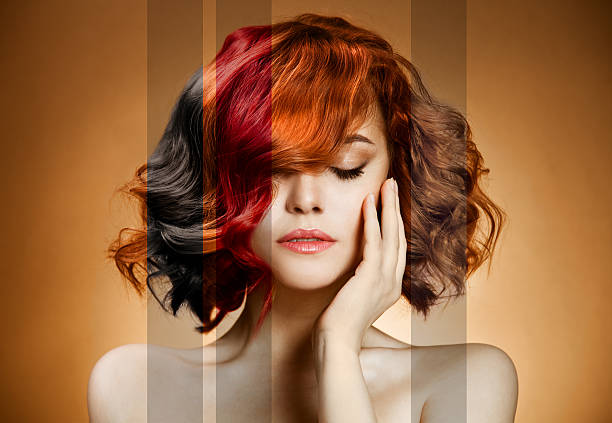Choosing the right hair color is a significant decision that can greatly impact one’s overall appearance and confidence. With an array of shades and trends available, women today have the freedom to express themselves through their hair color in diverse ways. This comprehensive guide will delve into the various aspects of selecting the perfect hair color, considering factors such as skin tone, lifestyle, trends, and personal preferences.
Understanding your skin tone is paramount in choosing a hair color that enhances your natural beauty. Skin tones generally fall into three categories: warm, cool, and neutral. Warm undertones are characterized by yellow, peachy, or golden hues, while cool undertones have more pink, blue, or purple tones. Neutral undertones possess a mix of warm and cool tones. To determine your undertone, observe the veins on your wrist – green veins suggest warm undertones, while blue veins indicate cool undertones.
For individuals with warm undertones, hair colors like golden blonde, caramel, honey, and auburn can complement their skin tone. These shades create a harmonious and radiant look. On the other hand, cool undertones pair well with hair colors like ash blonde, platinum, cool brown, and burgundy. These shades bring out the cool undertones in the skin and create a striking contrast.
Neutral undertones provide flexibility in choosing hair colors, as both warm and cool tones can be flattering. Opting for a balanced shade, such as a neutral brown or a soft rose gold, can enhance the natural beauty of neutral undertones.
Beyond undertones, personal style and preferences play a pivotal role in selecting a hair color. Some women prefer subtle changes that add dimension to their natural color, such as highlights or lowlights. Highlights can brighten the face and add depth to the hair, while lowlights introduce darker tones for a more nuanced look.
For those seeking a bolder transformation, vibrant and unconventional colors like pastels, neon shades, or even bold reds and purples offer a unique and eye-catching appearance. This trend of experimenting with strange colors has gained popularity in recent years, allowing women to showcase their creativity and individuality.
Considering lifestyle is essential when choosing a hair color. Low-maintenance options, such as balayage or ombre, offer a stylish look without the need for frequent touch-ups. These techniques involve a gradual transition of color, resulting in a softer grow-out and less maintenance compared to traditional all-over color.
It’s also important to factor in the maintenance required for certain shades. Lighter colors may need more upkeep to prevent brassiness, while darker colors often maintain their vibrancy longer. Consulting with a professional stylist can provide valuable insights into the level of maintenance associated with different hair colors.
Trends in hair coloring are constantly evolving, influenced by fashion, celebrities, and social media. Staying informed about current trends can inspire new ideas and help individuals make informed decisions about their hair color. From the timeless elegance of balayage to the bold statement of vivid colors, there are endless possibilities to explore.
When contemplating a drastic change, such as going from dark to light or vice versa, it’s advisable to seek professional advice. Transitioning between extreme shades requires expertise to achieve the desired result while minimizing damage to the hair. A skilled colorist can assess your hair’s condition, recommend suitable treatments, and execute the transformation seamlessly.
Considering the season can also influence the choice of hair color. Lighter shades are often popular in the spring and summer, reflecting the brightness of the season. Meanwhile, deeper and richer tones are favored in the fall and winter, complementing the cozy and warm atmosphere of these months.
In recent years, the concept of embracing natural hair colors and textures has gained traction. The trend towards embracing one’s natural beauty celebrates diversity and encourages women to appreciate their unique features. This movement promotes self-acceptance and challenges traditional beauty standards, allowing women to feel confident and empowered in their natural state.
It’s crucial to conduct a patch test before committing to a new hair color, especially if opting for at-home coloring kits. This test helps identify any potential allergic reactions and ensures that the chosen color will achieve the desired result. Additionally, conducting a strand test can provide insights into how the color will interact with your specific hair type.
Regular maintenance is essential for preserving the vibrancy of the chosen hair color. Using color-safe shampoos and conditioners, avoiding excessive sun exposure, and minimizing heat styling can contribute to prolonged color retention. Trimming the hair regularly helps eliminate split ends and maintain overall hair health.
In conclusion, choosing the perfect hair color involves thoughtful consideration of various factors, including skin tone, personal style, lifestyle, trends, and maintenance preferences. Whether opting for a subtle change or a bold transformation, the key is to feel confident and comfortable with the chosen color. With the multitude of options available, women have the opportunity to express themselves and enhance their natural beauty through the art of hair coloring.

